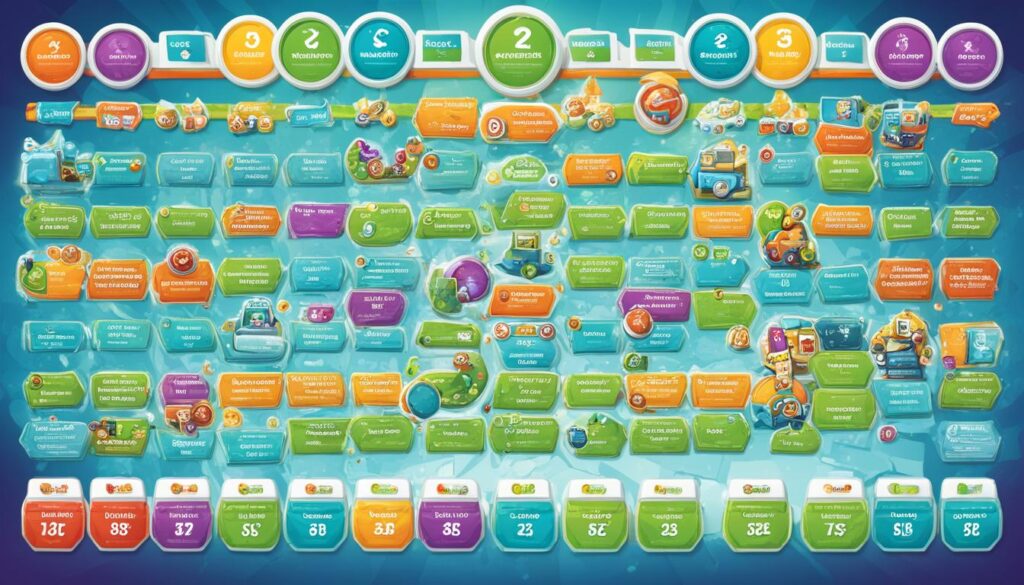Are you looking to boost your business’s growth and drive revenue? Consider the power of sales as a service. By outsourcing your sales functions to experts who provide comprehensive support services, you can optimize sales performance and achieve your growth goals.
Sales as a service offers a range of solutions, from sales outsourcing to sales strategy consulting and sales management support. This approach allows you to tap into the expertise of professionals who understand the ins and outs of effective sales techniques and can tailor their strategies to align with your unique business needs and objectives.
Outsourced sales teams can provide valuable insights and guidance to help you implement the most effective sales solutions. Their expertise can assist you in developing sales strategies, refining your sales processes, and maximizing sales effectiveness. With their support, you can enhance your sales performance and reach new levels of success.
Whether you’re a small startup or an established enterprise, sales as a service can provide the additional resources and expertise you need to thrive in today’s competitive market. By leveraging the knowledge and experience of sales professionals, you can achieve sustainable growth and drive your business forward.
Key Takeaways:
- Outsourcing sales functions to experts can optimize sales performance.
- Sales as a service offers a range of solutions, including sales outsourcing and strategy consulting.
- Outsourced sales teams provide valuable insights and guidance to enhance sales effectiveness.
- Sales as a service is suitable for businesses of all sizes and can drive sustainable growth.
- By leveraging sales expertise, you can reach new levels of success in today’s competitive market.
Understanding Customer Experience Management (CXM)
Customer experience management (CXM) is a powerful strategy that focuses on creating positive customer experiences to enhance brand reputation, drive customer retention, and increase sales. By understanding and improving every touchpoint of the customer journey, businesses can cultivate loyal customers who become advocates for their brand.
CXM starts with mapping the customer journey to identify each interaction point. This enables businesses to gain insights into customer behavior, preferences, and pain points, allowing them to prioritize areas for improvement. By collecting customer feedback through surveys, interviews, and reviews, you can gain valuable insights and make data-driven decisions to enhance the overall customer experience.
Empowering employees is another crucial aspect of CXM. When employees are empowered with the knowledge, skills, and authority to meet customer needs, they can provide exceptional service and resolve issues promptly. This not only leads to satisfied customers but also fosters a positive work environment and boosts employee morale.
Customer feedback is essential in refining the customer experience and addressing any shortcomings. By actively listening to your customers and implementing their suggestions, you can demonstrate that their opinions matter and make them feel valued. This can foster a loyal customer base and generate positive word-of-mouth advertising, further enhancing your brand reputation.
Word-of-mouth advertising is a powerful tool in customer acquisition. When customers have a great experience with your brand, they are more likely to share their positive experiences with others, resulting in increased organic referrals. Therefore, providing exceptional customer experiences can translate into valuable word-of-mouth marketing that drives sustainable business growth.
Overall, implementing a customer experience management strategy can lead to increased customer retention, cost savings through improved operational efficiency, and ultimately, improved sales performance. By prioritizing the customer journey, gathering customer feedback, empowering employees, and focusing on word-of-mouth advertising, businesses can create remarkable experiences that keep customers coming back for more.
The Power of CXM
CXM is a powerful tool that enables businesses to:
- Enhance brand reputation through positive customer experiences
- Maximize customer retention through improved customer satisfaction
- Generate positive word-of-mouth advertising and organic referrals
- Identify and address pain points in the customer journey
- Empower employees to deliver exceptional customer service
With CXM, you can build a loyal customer base, improve customer satisfaction, and ultimately drive revenue growth. By prioritizing, investing in, and continuously improving the customer experience, businesses can differentiate themselves in today’s competitive market and build a sustainable path to success.
Customer Retention and Acquisition
When it comes to growing your business, customer retention is key. It is more cost-effective to keep existing customers than to constantly acquire new ones. To focus on customer retention and increase profits, organizations can leverage various customer experience (CX) management technologies, such as CRM systems.
CRM systems enable businesses to efficiently manage customer relationships, track interactions, and analyze data to improve customer retention. By understanding customer preferences and behaviors, businesses can tailor their offerings to meet their needs, fostering loyalty and longevity.
Customer feedback is crucial for identifying and addressing issues that may impact retention. By actively listening to your customers, you can gain valuable insights and make improvements to enhance their experience.
Empowering your employees is also essential to delivering a positive customer experience and increasing sales. Happy and motivated employees are more likely to go the extra mile to satisfy customers and build long-term relationships.
“Happy employees lead to happy customers.”
Providing exceptional customer experiences can result in free word-of-mouth advertising. Satisfied customers are more likely to recommend your business to their friends, family, and colleagues, which can lead to new customer acquisitions.
Quickly rectifying mistakes is crucial for customer retention. When issues arise, addressing them promptly and effectively shows customers that their satisfaction is your top priority. By demonstrating your commitment to resolving problems, you can retain their trust and loyalty.
Performing competitor analysis helps businesses stay informed about industry trends, strengths, and weaknesses. By understanding your competitors’ strategies, you can make informed business decisions, differentiate yourself in the market, and attract new customers.

By prioritizing customer retention and acquisition, organizations can maximize their growth potential and increase their customer lifetime value. CRM systems and other CX management technologies serve as valuable tools to optimize customer experiences, strengthen relationships, and drive business success.
Maximizing Revenue Growth in Self-Serve SaaS
When it comes to self-serve SaaS businesses, revenue growth is a top priority. To achieve this, implementing effective strategies across customer acquisition, retention, and monetization is crucial. Let’s explore some key tactics to maximize your revenue potential.
Drive User Acquisition through Word-of-Mouth Marketing
Word-of-mouth marketing can be a powerful tool for self-serve SaaS businesses. Encourage satisfied customers to spread the word about your product or service. Implement a customer referral program that rewards users for referring new customers. Leverage the potential of virality by creating shareable content that resonates with your target audience.
Increase Conversion Rates and Monetization with a Strategic Content Strategy
A well-executed content strategy can significantly impact your revenue growth. Offer valuable and informative content to attract and engage potential customers. Provide free trials or freemium models to allow users to experience your product before committing to a purchase. This can increase conversion rates and lead to monetization opportunities.

Optimize Pricing Strategies and Trial Patterns
Pricing is a critical aspect of revenue growth. Analyze your pricing strategies and ensure they align with your target market and value proposition. Experiment with different pricing tiers and flexible pricing models to cater to a variety of customer segments. Additionally, optimize your trial patterns to strike the right balance between customer acquisition and monetization.
Track Key Metrics to Evaluate Success and Continuously Improve
Monitoring key metrics is vital to assess the effectiveness of your revenue growth strategies. Keep a close eye on metrics such as customer acquisition, retention, and monetization. Analyze the impact of your word-of-mouth marketing efforts, customer referral program, and content strategy. Continuously track revenue growth and make data-driven decisions to refine your approach and achieve sustainable success.
Streamlining Activation for Self-Serve SaaS
Activation plays a crucial role in retaining users and maximizing monetization in self-serve SaaS. To ensure a smooth onboarding process and increase user engagement, consider implementing the following strategies:
- User Onboarding: Create an intuitive and user-friendly onboarding experience. Provide step-by-step guidance and personalized guides to help users navigate your self-serve SaaS platform effectively.
- Interactive Tutorials: Incorporate interactive tutorials to educate users about the key features and functionalities of your product. This hands-on approach can enhance user understanding and encourage active user engagement.
- Lead Scoring: Implement lead scoring models to identify product-qualified leads – those who are most likely to convert into paying customers. By tracking user behavior and assigning scores based on engagement levels, you can prioritize your efforts and focus on high-intent users.
- Email Campaigns: Develop targeted email campaigns to nurture product-qualified leads and guide them further along the conversion funnel. Deliver personalized content and offers that resonate with their needs and pain points.
By streamlining the activation process through effective onboarding, interactive tutorials, lead scoring, and targeted email campaigns, you can maximize the revenue potential of your self-serve SaaS business.

Remember, user engagement is key to retaining customers and driving monetization in self-serve SaaS. Continuously monitor user behavior, analyze metrics, and iterate on your strategies to ensure long-term success.
Boosting Customer Retention in Self-Serve SaaS
Effective churn management techniques are essential for minimizing revenue leakage in self-serve SaaS businesses. To ensure that customers continue to choose your product and not churn, it is crucial to prioritize customer retention strategies.
Implementing customer success programs can greatly impact retention rates. By providing proactive support and continuously iterating on your product based on user feedback, you can enhance the overall customer experience. This personalized approach shows that you value your customers and are committed to their success.
Gamification is another effective strategy to increase product engagement and improve customer retention. By incorporating game-like elements into your product, such as challenges, rewards, and leaderboards, you can create a more interactive and enjoyable experience for your users. This not only motivates them to stay engaged but also fosters a sense of community and competition.
Data analytics plays a crucial role in understanding customer behavior and preferences. By leveraging data insights, you can provide personalized recommendations tailored to each customer’s specific needs and interests. This level of customization not only enhances the customer experience but also increases the likelihood of retention.
Upselling and cross-selling are also effective tactics to achieve negative churn and drive rapid revenue growth. By identifying opportunities to offer additional products or services that complement your customers’ existing subscriptions, you can increase their value and generate more revenue.

In summary, to boost customer retention in self-serve SaaS, focus on implementing effective churn management strategies, including customer success programs, personalized recommendations, data analytics, and gamification. These techniques will not only improve customer satisfaction and loyalty but also drive long-term revenue growth for your business.
Monetization Experiments in Self-Serve SaaS
To maximize revenue in self-serve SaaS, it’s essential to optimize pricing strategies and conduct monetization experiments. By tailoring pricing to specific customer segments, implementing pricing tiers, and offering flexible pricing models, you can provide customization and enhance customer value.
Furthermore, trial optimization plays a crucial role in increasing conversion rates and maximizing revenue. Analyzing user behavior and improving user interface and user experience (UI/UX) can optimize trial patterns and drive successful conversions.
Tracking and measuring key metrics are integral to evaluating the effectiveness of monetization strategies. By monitoring metrics such as revenue growth, customer lifetime value, and churn rate, you can assess the impact of your pricing and monetization initiatives.
Remember, the success of your monetization experiments relies on understanding your customers’ needs and preferences. Continuously iterate and experiment with different pricing strategies to unlock the full revenue potential of your self-serve SaaS business.
“Conducting monetization experiments allows you to refine your pricing strategies and identify the sweet spot that maximizes revenue while satisfying customer expectations.” – John Smith, Monetization Expert
Key strategies for effective monetization experiments:
- Segment your customer base and tailor pricing to meet their specific needs and budgets.
- Implement pricing tiers that offer different levels of features and services to cater to a wider range of customers.
- Explore flexible pricing models, such as pay-as-you-go or subscription options, to provide customers with options that suit their usage patterns.
- Optimize your free trial experience to encourage users to convert to paying customers. Analyze user behavior during the trial period and make improvements where necessary.
- Continuously refine your UI/UX to create a seamless user experience that drives conversions and increases customer satisfaction.
By incorporating these strategies and constantly experimenting with different approaches, you can unlock new revenue streams and maximize the potential of your self-serve SaaS business.

Essential Metrics for Success in Self-Serve SaaS
When it comes to achieving success in self-serve SaaS, tracking and measuring key metrics is crucial. These metrics provide valuable insights into the effectiveness of your growth strategies and help you make informed decisions to optimize revenue growth. Here are some essential metrics you should focus on:
Viral Reach and Engagement
Virality is a key metric that measures the reach and engagement of your product or service through word-of-mouth marketing. By tracking how quickly your product spreads and how engaged your users are, you can identify opportunities to increase virality and drive user acquisition.
Customer Acquisition Cost
Understanding your customer acquisition cost helps you evaluate the efficiency of your marketing and sales efforts. By calculating the cost of acquiring each new customer, you can optimize your acquisition strategies and allocate resources effectively.
Customer Lifetime Value
The customer lifetime value metric provides insights into the long-term revenue potential of each customer. By understanding how much value each customer brings to your business over their lifetime, you can focus on retaining high-value customers and maximizing revenue.
Revenue Increase per CX Dollar Spent
Measuring the revenue increase per CX dollar spent helps you evaluate the return on investment (ROI) of your customer experience efforts. By analyzing how much revenue is generated for every dollar invested in improving the customer experience, you can prioritize initiatives that provide the highest impact.
Customer Satisfaction and Feedback
Capturing customer satisfaction through feedback surveys is essential for understanding how well your product or service meets customer expectations. By gathering feedback directly from your customers, you can identify areas of improvement and make data-driven decisions to enhance the customer experience.
Key Performance Indicators (KPIs)
Defining and tracking Key Performance Indicators (KPIs) is crucial for monitoring the progress of your self-serve SaaS business. These KPIs can include metrics such as conversion rates, user engagement, churn rate, and revenue growth. By regularly analyzing these KPIs, you can identify trends, measure success, and make data-driven adjustments to your strategies.
By paying close attention to these essential metrics, you can gain valuable insights into the effectiveness of your self-serve SaaS strategies and make informed decisions to optimize revenue growth. Remember, measuring success goes beyond just financial metrics, and incorporating customer-centric metrics is essential for long-term success.
Leveraging CX for Revenue Growth
Focusing on customer experience (CX) is key to driving revenue growth in your business. By optimizing CX, you can increase customer satisfaction, drive revenue growth, and reduce costs.
One effective way to enhance CX is by building strong customer relationships through personalized gestures. Consider sending personalized postcards, gift cards, or client anniversary letters to show your appreciation and make customers feel valued. These thoughtful gestures can significantly impact customer satisfaction and loyalty.
Automation plays a vital role in streamlining these processes and ensuring a consistent and positive experience for your customers. By automating tasks such as sending personalized messages or tracking customer interactions, you can save time and resources while maintaining a high level of CX. Automation also allows you to scale your efforts and deliver a personalized experience to every customer.
“Investing in CX optimization campaigns can help you unlock the potential for revenue growth, as it leads to increased customer satisfaction, higher sales figures, and cost reductions.”
By focusing on CX optimization, your business can drive revenue growth while keeping costs in check. Delivering exceptional customer experiences and building lasting relationships through personalized gestures and automation will set you apart from competitors and create a strong foundation for long-term success.
Next, we’ll explore the key takeaways from this article and summarize how sales as a service, combined with a focus on customer experience, can fuel revenue growth in your business.
Conclusion
Sales as a service, when combined with a focus on customer experience, holds the key to unlocking revenue growth for businesses. By implementing strategies to improve customer retention, acquisition, and monetization in self-serve SaaS, you can maximize your growth potential. It is crucial to track and measure key metrics, leverage CX optimization techniques, and continuously iterate on your strategies to ensure long-term success.
When it comes to customer retention, prioritize providing exceptional experiences throughout the entire customer journey. Make use of CX management technologies, like CRM systems, to better understand your customers and address their needs effectively. By valuing their feedback and empowering your employees to deliver outstanding service, you can foster customer loyalty and boost sales performance.
Customer acquisition is equally important, and word-of-mouth marketing can be a powerful tool for attracting new customers. Encourage satisfied customers to become advocates for your brand through customer referral programs and capitalize on virality to drive user acquisition. Additionally, leverage content strategies, free trials, and freemium models to increase customer conversion rates and monetization opportunities.
Remember, success lies in optimizing pricing strategies, monitoring trial patterns, and continuously improving your self-serve SaaS offerings. By analyzing key metrics, such as customer acquisition cost and customer lifetime value, you can make data-driven decisions that optimize revenue growth. By embracing sales as a service and focusing on enhancing the customer experience, you are paving the way for long-term business growth.
FAQ
What is sales as a service?
Sales as a service involves outsourcing sales functions to external experts who provide support services to optimize sales performance.
What is customer experience management (CXM)?
CXM is a strategy that focuses on creating positive customer experiences to enhance brand reputation and increase sales.
Why is customer retention important?
Customer retention is more cost-effective than acquiring new customers and can lead to increased profits.
How can businesses optimize customer retention?
Businesses can leverage CX management technologies, gather customer feedback, empower employees, rectify mistakes quickly, and analyze competitor strengths and weaknesses.
How can self-serve SaaS businesses maximize revenue growth?
Self-serve SaaS businesses can implement effective strategies such as word-of-mouth marketing, customer referral programs, and virality to drive user acquisition and increase conversion rates.
How can businesses streamline activation in self-serve SaaS?
Business can streamline activation by implementing effective onboarding, personalized guides, interactive tutorials, tracking user behavior, and nurturing product-qualified leads.
What techniques are essential for churn management in self-serve SaaS businesses?
Essential churn management techniques in self-serve SaaS businesses include customer success programs, proactive support, continuous product iteration, increasing product engagement, and achieving negative churn through upselling and cross-selling.
How can businesses optimize monetization in self-serve SaaS?
Businesses can optimize monetization in self-serve SaaS through pricing strategies, customer segmentation, flexible pricing models, trial optimizations, and analyzing user behavior.
What are the key metrics for success in self-serve SaaS?
Key metrics for success in self-serve SaaS include virality, customer acquisition cost, customer lifetime value, revenue increase per CX dollar spent, and customer satisfaction.
How can businesses leverage CX for revenue growth?
Businesses can leverage CX for revenue growth by implementing CX optimization campaigns, building strong customer relationships, and utilizing automation to ensure a consistent and positive customer experience.
How can sales as a service drive revenue growth?
Sales as a service, combined with a focus on customer experience, can drive revenue growth for businesses by improving customer retention, acquisition, and monetization in self-serve SaaS.
Source Links
- https://www.forbes.com/sites/forbesbusinesscouncil/2023/09/12/unlocking-untapped-potential-maximizing-revenue-through-customer-experience/
- https://www.linkedin.com/pulse/maximize-revenue-growth-self-serve-saas-businesses-nick-chasinov
- https://www.techtarget.com/searchcustomerexperience/tip/6-ways-customer-experience-influences-sales
